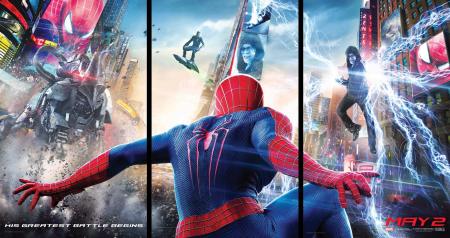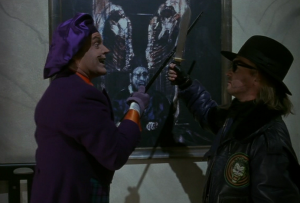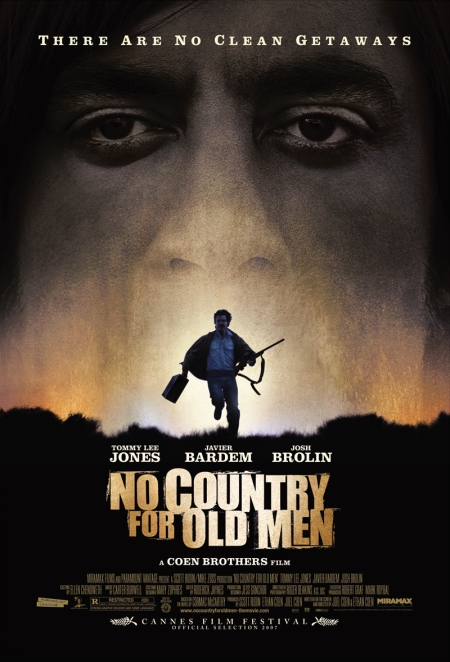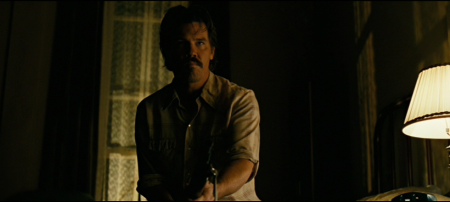This isn’t a review and it’s hopefully not big on spoilers. It’s designed to be more of a post film analysis, rather than something designed to sell you on a movie. If you’re still unsure about seeing the movie I’d say give it a shot, I guarantee that it’s not going to be widely loved but if you do manage to synch up with it’s very peculiar wavelength you’ll be one of the cool kids, and at the end of the day isn’t that what we all want? To be one of the cool kids.
Anyway to business, AMAZING SPIDER-MAN 2 (hereby referred to as ASM 2) is a film that feels caught between two masters. On one hand the film feels perfectly happy to focus on a self contained narrative, pitting Spider-Man against the latest freak of the week, Electro. On the other hand the film feels obligated to keep powering the meta-story of the franchise at the expense of said self contained narrative. As such we end up with a film where all three acts feels like very specific and very unique movies. The first act is Spider-Man vs. Electro, this segment establishing Spider-Man’s status quo, evaluating Peter’s relationship with Gwen Stacey, introducing Max Dillon, showing his subsequent transformation into Electro and crescendoing with Spider-Man and Electro’s (spectacular) showdown. The film achieves all of the above in roughly an hour, the second act promptly remembers that this is an Orci and Kurtzman script and swiftly introduces a plotline about magic blood and sets Peter off on an internalised journey of discovery. During this period the film infrequently checks in on it’s villains, not for any plot reasons but more as a means of habeas corpus. The third act has absolutely nothing to do with the second act and serves as a pat continuation of the conflicts set up in the first act via the means of super-powered smack down. Once this is all settled the last twenty minutes of the film are essentially an internal micro-sequel to ASM 2 playing out within the movie itself and building from some of the nebulous themes explored in the second act, in much the same way the last forty minutes of THE DARK KNIGHT play more as hastily constructed sequel than an actual third act . This micro-sequel establishes a villain, deals with a villain, disrupts the status quo, teases the next sequel, establishes another villain, resolves Spider-Man’s internal conflict, dispatches the new villains and establishes a new status quo within the space of about twenty minutes.
Structurally speaking the film is a goddamn mess and it feels like there’s a lean 80 minute film that director Marc Webb is 100% invested in which has been padded out by second unit stuff designed to establish Sony’s vision of a connected Spider-Man franchise of films. The franchise aspects of the film feel as rote and unfun as the machinations of IRON MAN 2, whilst the Electro story has the giddy, anything can and will happen, tone of THE AVENGERS. It’s the equivalent of having your dessert poured over the broccoli to better expedite your meal eating experience. So as a whole I should hate the film, right? Well I kind of do and I don’t, and generally I find myself falling more into the “yay” rather than “nay” category. The reason for this is because despite the overt corporate nature, exemplified by the blatant attempts at franchising, the film feels like a wildly loony beast. On a scene by scene basis the film operates that is feverishly inventive, well acted, and beautifully shot. Webb doesn’t just have an eye for gorgeous visuals (and the film is routinely beautiful looking) but also a knack for offbeat compositions and sequences. From the exhilarating first person web slinging sections, to the use of slow motion and freeze frame to indicate thought processes all of Webb’s action sequences are not only driven by a kinetic energy, but also it’s own quirks.
A big part of this energy and quirkiness comes from Hans Zimmer’s score (which if you’re British can listen to via Spotify above). Taking over scoring duties from perennial bore James Horner, Zimmer has constructed a score that is brimming with personality. Working with a supergroup of previous Zimmer collaborators Six the score is a mixture of musical styles a world away from Zimmer’s usual rhythm and string scoring style. There are elements of Zimmer’s usual pacy scoring layered throughout the film, but they’re offset by playful woodwind accompaniments, distorted guitars, dubstep beats and ranting vocals. In particular Electro’s theme is kind of stupendous, with a muttered paranoid refrain increasing in tone and aggression as the woodwinds used to signify his more human side give way to, at times diegetic, dubstep. It’s a frenzied, multilayered, exciting piece of music and it perfectly complements the spectacular melancholy of Spider-Man and Electro’s first tet-a-tet. The entire crux of the sequence is Spider-Man trying to reach out to the newly formed Electro and the score manages to be both tragic and visceral at the same time, discordant elements bonding together to create something really memorable.
The eccentric, pulsing score, perfectly captures the gorgeous visuals of Electro, pulses of electricity peeling away from him in brilliant blue and purple strips. In comparison to the rather drab action and look of the original film, Amazing Spider-Man is constantly awash with colour both visually and in terms of it’s general tone. In fact, for better or worse, the film it reminds me of the most is BATMAN FOREVER. Largely in how willing it is to engage with the more loony aspects of the comic books. From; wonderfully malevolent German Psychiatrists, to degenerative diseases that can turn a man’s hands into talons, secret laboratories hidden in compartmentalised subway trains and giant mechanised power suits the film is practically giddy with the possibility afforded to it by it’s source material. But this unbound comic book sensibility also casts harsh light onto the moments of the film that are more grounded. With a film that can be so filled with joie de vivre it has a nasty habit of being it’s own major buzzkill. Take for example the entire second act which sees Spider-Man show up for one minor scene, and worst of all banishes Andrew Garfield to scene after scene where he’s in scenes by his lonesome. Garfield is fantastic as Spider-Man, imbuing the character with humour and warmth, but he works better as part of an ensemble. His scenes with Emma Stone as Gwen Stacy and Dane DeHaan as Harry Osborne effortlessly convey the intimacy and friendship of the respective relationships, but when the film casts him adrift for it’s long middle section he feels hopelessly alone. In fact the film is very good at creating amazing pairings of actors and then doing nothing with them, giving us just enough to want more of the dynamic but not enough to leave you truly satisfied. DeHaan for example has some amazing scenes with a variety of characters in the film, but the more indelible pairings are tragically cut short. It’s essentially a casualty of the film’s bloat, the need to jam so much plot into such a short time frame that forces the movie to be fairly cutthroat at times with it’s more character led scenes.
When all is said and done I’m probably a little easy on the film, largely because the first hour perfectly encapsulates the kind of Spider-Man movie I’ve always wanted to see. Spider-Man as a superhero who helps people, who feels like part of a community, and has genuine compassion. The first act is fun, exciting and spectacular looking and the subsequent deflation in the second act and rather pat conclusion only serve to reduce the film from exceptional to great. It also has me salivating for the next film, as the film largely feels like it’s done all of the legwork vis-a-vis both rebooting Spider-Man and establishing the tone and structure of the franchise. It’s just a shame that to get to that point it sometimes feels like this, great, film has been sacrificed for the greater good. But when the sacrificial film includes broadly evil German doctors, zany comic book action and amazing turns by all of it’s core cast I don’t particularly feel too let down.

 One of the problems with Batman is that he is a character who is hard to relate too. Compared to the more blue collared heroes of Marvel the DC heroes have always strayed away from the common man angle. Superman is a deity, Wonder Woman is an Amazon, the Green Lantern is an interstellar cop and Batman is a playboy billionaire driven to the point of madness by the murder of his parents. Having his parents be killed in cold blood at such a young age not only distances the character from his readers but limits how you can tell the story of Batman. The character is essentially going through long term post-traumatic stress, raging against the world which disrupted his life and as such you can either write the character as a cipher or a mad man.
One of the problems with Batman is that he is a character who is hard to relate too. Compared to the more blue collared heroes of Marvel the DC heroes have always strayed away from the common man angle. Superman is a deity, Wonder Woman is an Amazon, the Green Lantern is an interstellar cop and Batman is a playboy billionaire driven to the point of madness by the murder of his parents. Having his parents be killed in cold blood at such a young age not only distances the character from his readers but limits how you can tell the story of Batman. The character is essentially going through long term post-traumatic stress, raging against the world which disrupted his life and as such you can either write the character as a cipher or a mad man.




















